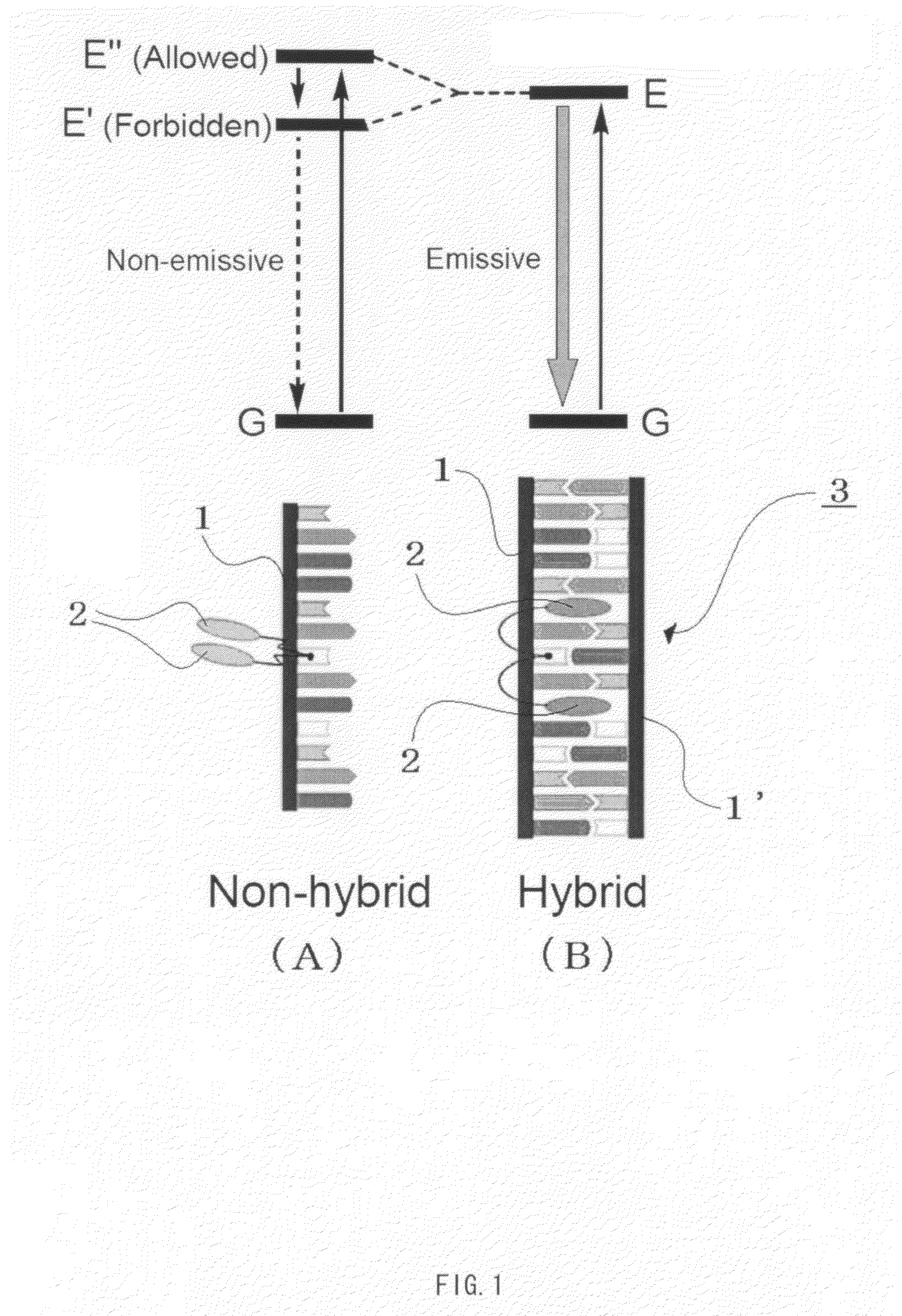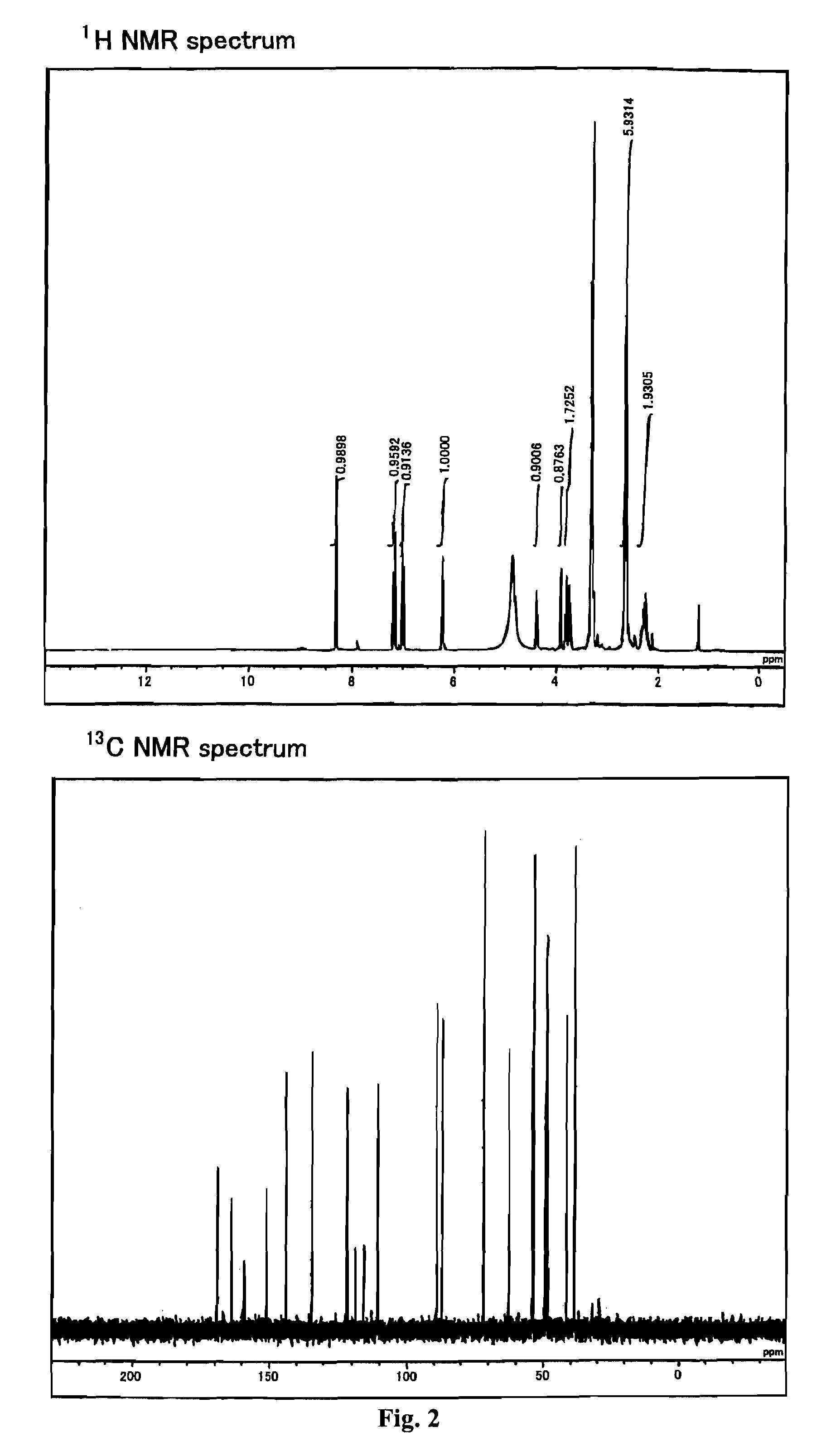Primer, primer set, and nucleic acid amplification method and mutation detection method using the same
a primer set and primer technology, applied in the field of primer set, primer set, and nucleic acid amplification method and mutation detection method using the same, can solve the problems of cost, for example, and the emission of fluorescence of conventional fluorescent substances
- Summary
- Abstract
- Description
- Claims
- Application Information
AI Technical Summary
Benefits of technology
Problems solved by technology
Method used
Image
Examples
examples
[0366]The present invention is described in further detail using the following examples. However, the present invention is not limited by the following examples. In the description below, “ODN” denotes oligodeoxyribonucleotide (DNA oligomer).
[Measurement Conditions and Others]
[0367]The reagents and solvents used herein are commercially available. N-hydroxysuccinimidyl ester of biotin used herein was one available from PIERCE. The silica gel for purifying a compound used herein was Wako gel C-200 (Wako Pure Chemical Industries, Ltd.). 1H, 13C, and 31P NMR spectra were measured with JNM-α400 (trade name) available from JEOL (JOEL Ltd.). The coupling constant (J value) is indicated in hertz (Hz). The chemical shift is indicated in ppm. Dimethylsulfoxide (δ=2.48 in 1HNMR, δ=39.5 in 13CNMR) and methanol (δ=3.30 in 1HNMR, δ=49.0 in 13CNMR) were used for internal standards. For 31PNMR measurement, H3PO4 (δ=0.00) was used as an external standard. The ESI mass spectrum was measured using Bru...
examples 1 to 3
[0369]According to the following Scheme 1, compounds 102 and 103 including two active amino groups protected with trifluoroacetyl groups, respectively, were synthesized (produced), and further phosphoramidite 104 was synthesized.
[0370]
Scheme 1—Reaction Reagent and Reaction Conditions:
(a) (i) N-hydroxysuccinimide, EDC / DMF, (ii) tris(2-aminoethyl)-amine / CH3CN, (iii) CF3COOEt, Et3N; (b) DMTrCl / pyridine; (c) 2-cyanoethyl-N,N,N′,N′-tetraisopropyl phosphoramidite, 1H-tetrazole / CH3CN.
[0371]Scheme 1 is described below in further detail.
example 1
Synthesis of 2-[2-[N,N-bis(2-trifluoroacetamidoethyl)]-aminoethyl]carbamoyl-(E)-vinyl)-2′-deoxyuridine (Compound 102)
[0372]The starting material, (E)-5-(2-carboxyvinyl)-2′-deoxyuridine (Compound 101), was synthesized according to Tetrahedron 1987, 43, 20, 4601-4607. That is, first, 71 mL of 1,4-dioxane was added to 430 mg of palladium acetate (II) (FW 224.51) and 1.05 g of triphenylphosphine (FW 262.29), and further 7.1 mL of triethylamine (FW 101.19, d=0.726) was added thereto. This was heated and stirred at 70° C. After the reaction solution was changed from reddish brown to blackish brown, 14.2 g of 2′-deoxy-5-iodouridine (FW 354.10) and 7.0 mL of methyl acrylate (FW 86.09, d=0.956) that were suspended in 1,4-dioxane were added thereto. This was heat-refluxed at 125° C. for one hour. Thereafter, it was filtered while it was still hot, the residue was washed with methanol, and then the filtrate was recovered. After the solvent was evaporated from the filtrate under reduced pressur...
PUM
| Property | Measurement | Unit |
|---|---|---|
| carbon number | aaaaa | aaaaa |
| wavelength | aaaaa | aaaaa |
| temperature | aaaaa | aaaaa |
Abstract
Description
Claims
Application Information
 Login to View More
Login to View More - R&D
- Intellectual Property
- Life Sciences
- Materials
- Tech Scout
- Unparalleled Data Quality
- Higher Quality Content
- 60% Fewer Hallucinations
Browse by: Latest US Patents, China's latest patents, Technical Efficacy Thesaurus, Application Domain, Technology Topic, Popular Technical Reports.
© 2025 PatSnap. All rights reserved.Legal|Privacy policy|Modern Slavery Act Transparency Statement|Sitemap|About US| Contact US: help@patsnap.com



